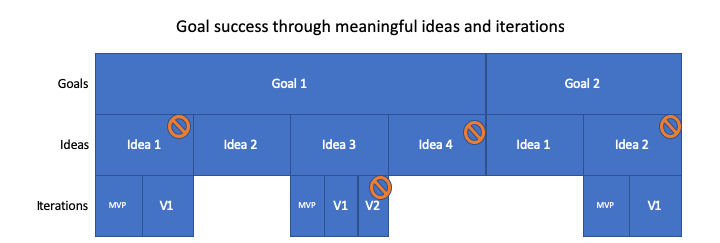Latest news about Bitcoin and all cryptocurrencies. Your daily crypto news habit.
As a product manager, it is critical to have a meaningful roadmap with a backlog of work. Being able to ideate and constantly iterate makes our products better. However, it is critical that we are able to find which of our ideas are going to be the most impactful ones. Over the past year, my team has been working on refining how we approach this and found some things work better than others. The following are some of the things we found really useful.
1. Understand the goal — the first thing you must do is to really understand what is the goal you and the business are trying to achieve. If there is any misalignment you must align before continuing. It was amazing how many times we went and implemented things where the goal was not understood, or it was misaligned. Having understood this from the beginning would have saved us a lot of time and resources. Understanding the goal will take you to different paths, for example, a goal of driving adoption will lead you to do different things than driving for revenue or usage. If you do not understand this, you will cycle and leave things to chance.
2. Understand what success looks like — once you understand the goal, you also need to understand what success looks like. Implementing items without knowing what success looks like is like throwing darts in the dark and wishing they land on the bullseye. You need to ask critical questions, for example, if you are trying to improve retention of your product by means of improving data quality, you should ask yourself:
- How much do I need to improve retention to make it meaningful?
- How much data quality improvements do I need to do to get to that level of improvement?
- Is this a one time task or does it need to have multiple iterations/phases?
3. Understand if this opportunity can achieve success –this is called having a hypothesis by doing an opportunity analysis. This is where you will get data-driven, you need to fetch as much data as possible to truly understand if your idea can achieve success and if it’s good. Here is where you will kill most of your ideas (and that is ok!). Many times you will realize that it is not feasible to achieve success or that the challenge would be so high that its opportunity cost is not worth it. Also do not forget, here is where you will define your KPIs and your target measures.
4. Understand how much investment it will take — each opportunity is different and there are different costs associated with it. In terms of costs, you will have PM time, engineering time, cost of goods, time to roll out, etc. Understanding these is important as you will have to use it to compare against other opportunities.
5. Prioritize — now that you know impact and cost, you can objectively compare your efforts. My advice here is to make it more mechanical than emotional and let the data do the talking. Once you have your items prioritized you can build your backlog and roadmap by working with all stakeholders of the organization. This is usually a painful process, but if you are data driven it’s less painful than you think.
6. Re-valuate over time — when you have a roadmap you might be tempted to just execute on it as it is what was committed to the business. However, I have found that things change and that is what was important three months ago when re-evaluated now is not as impactful as something new that came up. Therefore, before executing on a committed work item, always validate that it’s still the most impactful thing you can do for your business at that point in time.
Here is an oversimplified example of how simple you can make decisions by comparing ideas once you do your homework. Both idea 1 and 2 achieve the same result but one takes significantly more time and resources than the other:
Note: see how important understanding the goal is. If we only care about revenue we can do Idea 2, but what will that do to retention? Do we care about that?
Finally, it is always good to take a step back and think about this at a higher level. You will always have multiple goals in your business. Therefore, you will have to do the same exercise at a higher level. Which goal are you going to put more effort into? You only have a limited amount of resources, in particular time and engineering, so being smart on how to use them is critical for your product success.
Did you like this article? Subscribe to get new posts by email.
Originally published at geekonrecord.com.
Product management and the art of focusing on what matters was originally published in Hacker Noon on Medium, where people are continuing the conversation by highlighting and responding to this story.
Disclaimer
The views and opinions expressed in this article are solely those of the authors and do not reflect the views of Bitcoin Insider. Every investment and trading move involves risk - this is especially true for cryptocurrencies given their volatility. We strongly advise our readers to conduct their own research when making a decision.

